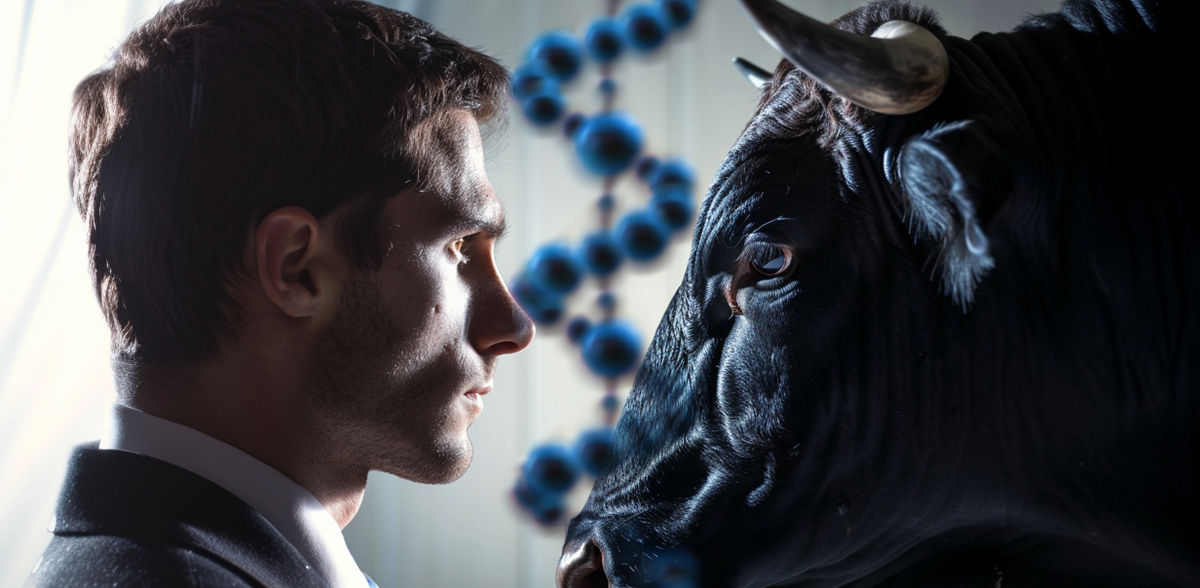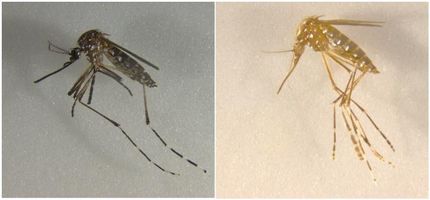What can bulls tell us about men?
Towards a better understanding: Which genes and mechanisms control male fertility?
Advertisement
Researchers have found genes in the reproductive organs of bulls that influence fertility. The findings can be transferred to humans, as these genes are also present in men.
Infertility is a widespread problem: worldwide, one in eight couples fail to fulfil their desire to have children within a year – or even at all. In half the cases, this is due to fertility disorders that stem from the male. However, it is difficult to identify the genetic causes of such fertility disorders in humans. Researchers lack data on the quality of semen and on molecular markers from sufficiently large cohorts of healthy men of reproductive age.
The path to a better understanding of which genes and mechanisms control male fertility therefore lies via suitable laboratory animals – in this case, bulls.
A research team led by Hubert Pausch, Professor of Animal Genomics at ETH Zurich, studied young bulls to investigate in detail which genes are active in different tissues of the animals’ reproductive organs and how this affects their fertility. Their study was recently published in the journal Nature Communications.
For this investigation, the researchers from the Institute of Agricultural Sciences used samples of testicles, epididymis and vas deferens from 118 freshly slaughtered bulls of reproductive age. The animals were not killed specifically for the research.
One thing the scientists characterised using these biopsies was the bulls’ transcriptomes – in other words, all the messenger RNAs present in each kind of tissue, which represent the gene transcripts. This enabled the team to find out which genes are active in which of the three tissues. Based on that knowledge, they created corresponding transcriptome profiles for the bulls. They then compared these profiles with those of humans and mice.
Many genes involved
Through this research, the team discovered a large number of genes and their variants that are associated with fertility in bulls. Most of the genes found are also likely to be relevant to male fertility in humans. In evolutionary terms, the regulation of male fertility is “highly conserved,” Xena Mapel, first author of the study explains. This means that the genes responsible for reproduction function similarly across mammals.
“These genes are closely linked to poor fertility in bulls,” Mapel says. “Such subfertile bulls don’t show up during conventional ejaculate screening. However, they can be reliably detected with our new marker genes.”
Unusual animal model
Although cattle are an unusual choice of animal model, they are ideal for such studies. For one thing, the genes of breeding bulls are well understood, and for another, breeding organisations obtain ejaculate from the animals twice a week as part of normal operations. This is analysed in detail before being diluted and used to inseminate hundreds of cows – or is discarded if the quality of the ejaculate is poor.
The bull cohort analysed here also has the great advantage that all the animals are similar in age. “This cohort is very homogeneous. If we had to carry out a comparable study on men, we’d have to rely on voluntary donors, potentially across all possible age groups. This would give us data that’s very difficult to compare.”
Data on the fertility of young men is collected annually from Swiss recruits to the armed forces, but this can hardly be used for such analyses. “We don’t know what influences the men were exposed to before they took the fertility test, which will be different for every test subject. Furthermore, it’s practically impossible to obtain tissue samples from their reproductive tract, as that would entail an invasive medical procedure.”
Findings to benefit livestock breeders
It is still unclear how the new findings will be incorporated into human fertility research, but they are already paving the way for better diagnostics with which to identify the corresponding genes and their variants in breeding bulls. That means livestock breeders will likely be the first to benefit from the findings, since they will help to minimise financial losses from failed artificial inseminations.
Currently, every bull’s ejaculate is tested for quality before use and the calves’ genomes are analysed; however, some infertile bulls still slip through. If a breeder inseminates cows with semen from an infertile bull, the cows will not become pregnant. And with each insemination costing 80 Swiss francs, that can soon eat up a breeder’s budget: a typical Swiss dairy farm spends several thousand Swiss francs a year on artificially inseminating its herd of cows. But it doesn’t end there: the unsuccessfully inseminated cows often cause further problems to the farmers, as they don’t give birth to calves and no longer produce milk, meaning the farmer has to replace them. And that costs money.
Artificial insemination is now standard in beef and dairy cattle husbandry, and also in pig breeding. In Switzerland, around 800,000 cows are artificially inseminated every year. Natural matings – when a bull mates with a cow naturally – take place only very rarely. “Raising a bull isn’t easy. Most farmers don’t have the space for such a large animal,” Pausch says.



























































